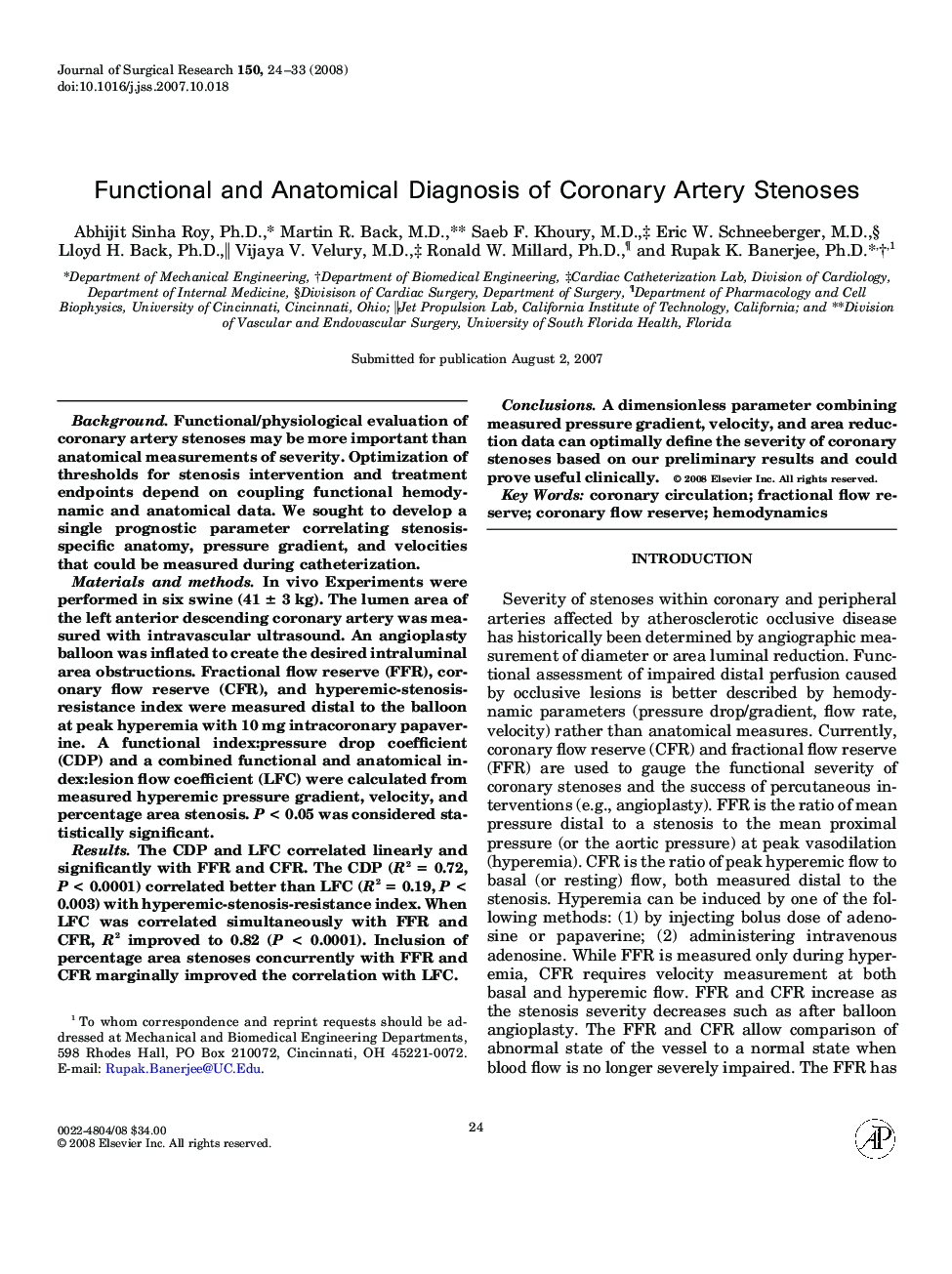| Article ID | Journal | Published Year | Pages | File Type |
|---|---|---|---|---|
| 4304011 | Journal of Surgical Research | 2008 | 10 Pages |
BackgroundFunctional/physiological evaluation of coronary artery stenoses may be more important than anatomical measurements of severity. Optimization of thresholds for stenosis intervention and treatment endpoints depend on coupling functional hemodynamic and anatomical data. We sought to develop a single prognostic parameter correlating stenosis-specific anatomy, pressure gradient, and velocities that could be measured during catheterization.Materials and methodsIn vivo Experiments were performed in six swine (41 ± 3 kg). The lumen area of the left anterior descending coronary artery was measured with intravascular ultrasound. An angioplasty balloon was inflated to create the desired intraluminal area obstructions. Fractional flow reserve (FFR), coronary flow reserve (CFR), and hyperemic-stenosis-resistance index were measured distal to the balloon at peak hyperemia with 10 mg intracoronary papaverine. A functional index:pressure drop coefficient (CDP) and a combined functional and anatomical index:lesion flow coefficient (LFC) were calculated from measured hyperemic pressure gradient, velocity, and percentage area stenosis. P < 0.05 was considered statistically significant.ResultsThe CDP and LFC correlated linearly and significantly with FFR and CFR. The CDP (R2 = 0.72, P < 0.0001) correlated better than LFC (R2 = 0.19, P < 0.003) with hyperemic-stenosis-resistance index. When LFC was correlated simultaneously with FFR and CFR, R2 improved to 0.82 (P < 0.0001). Inclusion of percentage area stenoses concurrently with FFR and CFR marginally improved the correlation with LFC.ConclusionsA dimensionless parameter combining measured pressure gradient, velocity, and area reduction data can optimally define the severity of coronary stenoses based on our preliminary results and could prove useful clinically.
